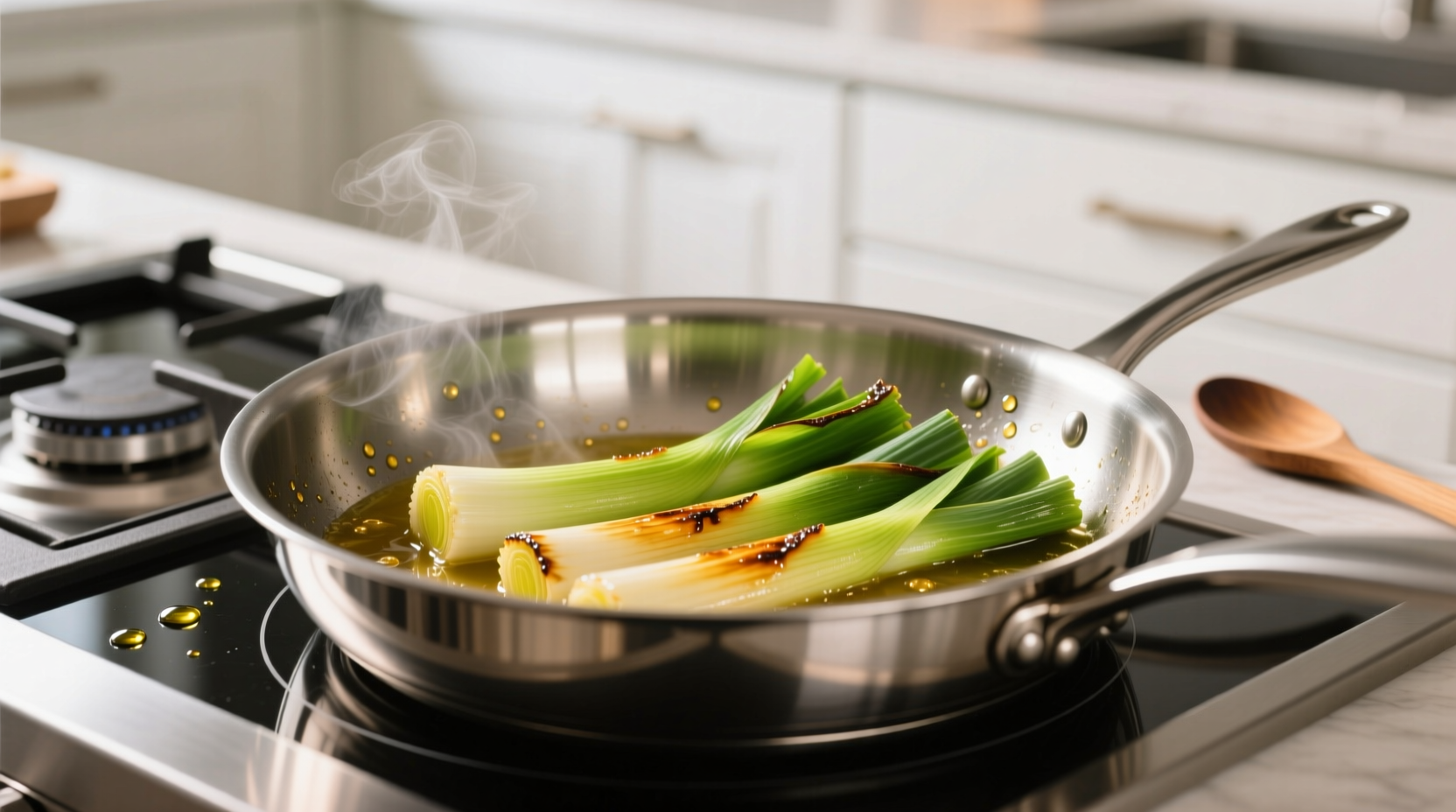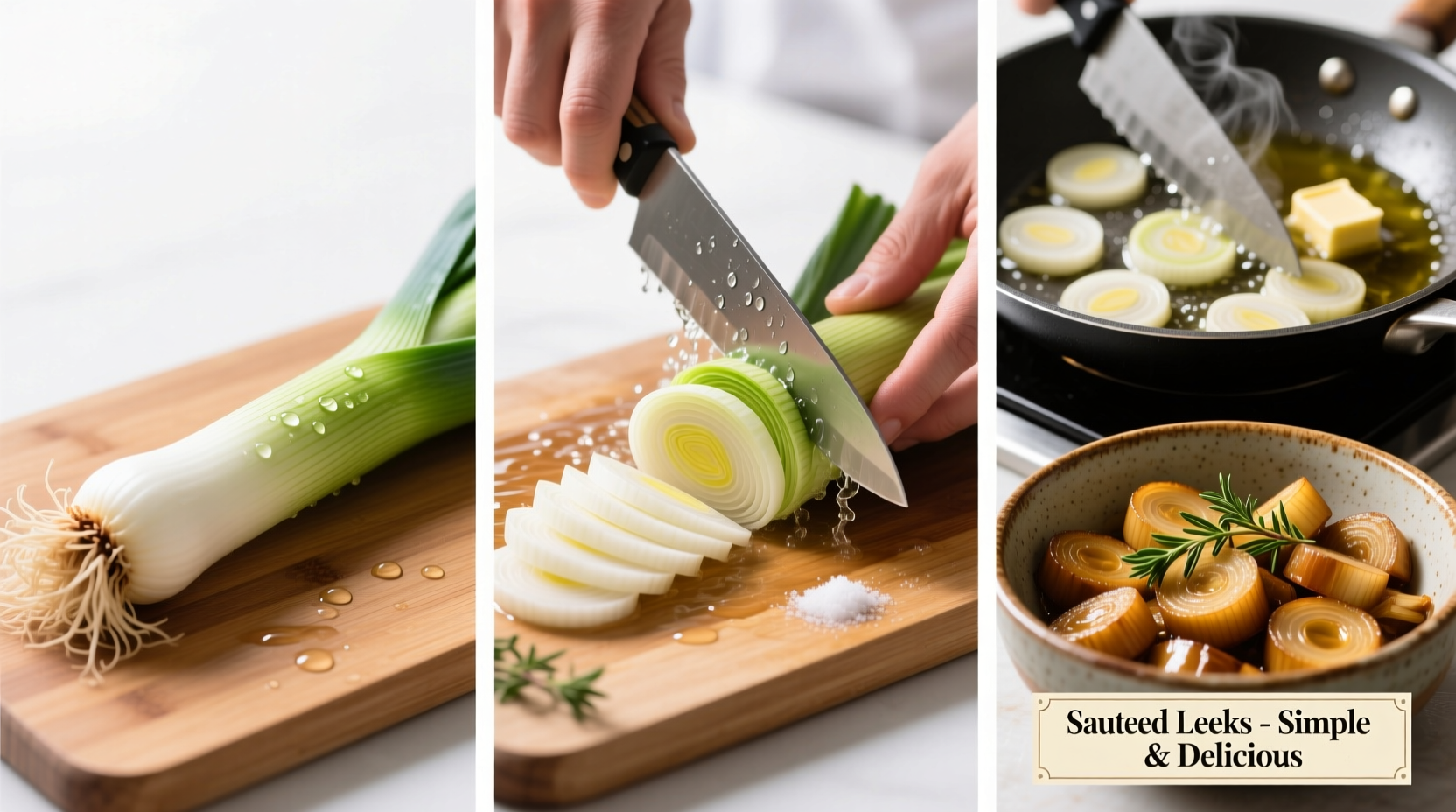Discover the culinary secret that turns this humble allium into a kitchen superstar. Whether you're preparing a classic vichyssoise or elevating weeknight dinners, mastering leek preparation opens doors to sophisticated flavors without complicated techniques.
Understanding Leek Varieties and Selection
Not all leeks are created equal. Choosing the right variety impacts your cooking results significantly. Summer leeks (thin-stalked) offer delicate flavor perfect for quick sautés, while winter varieties (thick-stalked) provide robust texture ideal for roasting or braising.
| Variety | Best Cooking Method | Flavor Profile | Seasonality |
|---|---|---|---|
| King Richard | Sautéing, Steaming | Mild, sweet | Spring-Summer |
| Bandit | Roasting, Grilling | Robust, earthy | Fall-Winter |
| Blue Solaise | Soups, Stocks | Complex, onion-like | Year-round |
According to USDA agricultural data, leeks contain 50% more vitamin K than onions and provide significant amounts of vitamins A and C. Their unique growing process—hilling soil around stalks to blanch them—creates the prized white-to-light-green sections most recipes utilize.
Step-by-Step Leek Preparation
Improper cleaning causes gritty disappointment in otherwise perfect dishes. Follow this professional chef method:
- Trim root end and dark green tops (reserve for stocks)
- Cut lengthwise through the white base
- Submerge in cold water, separating layers to release dirt
- Swirl gently for 30 seconds to dislodge trapped particles
- Lift leeks from water (dirt settles at bottom)
- Pat dry with clean kitchen towel before slicing
For uniform cooking, slice crosswise to consistent thickness:
- 1/8 inch for quick sautés or garnishes
- 1/4 inch for soups and stews
- 1/2 inch for roasting or grilling

Mastering Leek Cooking Techniques
Different cooking methods create distinct culinary experiences. Understanding these techniques helps you choose the right approach for your recipe.
Sautéing: The Foundation Technique
The most versatile method for how to cook leeks properly:
- Heat 1 tablespoon butter or olive oil in skillet over medium heat
- Add leeks and 1/4 teaspoon salt to draw out moisture
- Cook 8-12 minutes, stirring occasionally, until translucent
- For caramelized leeks, reduce heat to medium-low and cook 20-25 minutes
Avoid common mistakes: high heat causes burning before softening, while insufficient salt prevents proper moisture release. The National Center for Home Food Preservation confirms that proper salting draws out excess water, allowing leeks to cook evenly without steaming.
Roasting: Deep Flavor Development
Transform leeks into sweet, tender morsels:
- Toss halved leeks with olive oil, salt, and pepper
- Roast at 400°F (200°C) for 25-30 minutes
- Flip halfway through for even browning
Roasting concentrates natural sugars through the Maillard reaction. The American Chemical Society notes this process creates over 600 flavor compounds, explaining why roasted leeks taste dramatically sweeter than raw.
Steaming: Preserving Nutrients
Ideal for retaining maximum nutritional value:
- Place leek slices in steamer basket
- Steam over simmering water for 5-7 minutes
- Test with fork for tender-crisp texture
When to Use Different Cooking Methods
Context matters when deciding how to cook leeks. Consider these boundaries:
- Soups and purees: Sauté first to develop flavor base before adding liquid
- Salads and garnishes: Quick steam or blanch to maintain crisp texture
- Main dishes: Roast or grill for substantial texture and caramelized notes
- Freezing for later use: Blanch 2 minutes before freezing to preserve quality
Professional chefs at Le Cordon Bleu emphasize that leeks' high water content (93%) requires different handling than onions. Their delicate fibers break down faster, making timing crucial—overcooked leeks turn mushy within minutes.
Delicious Ways to Use Cooked Leeks
Move beyond basic side dishes with these professional applications:
- Leek and potato soup: Sauté leeks first, then add potatoes and broth
- Frittatas and quiches: Mix sautéed leeks with eggs for elegant brunch
- Pasta toppings: Toss roasted leeks with lemon zest and Parmesan
- Grain pilafs: Stir steamed leeks into finished rice or quinoa
Food historians at Oxford Symposium on Food & Cookery document leeks' culinary journey from ancient Roman kitchens to modern French cuisine. Their popularity surged in 17th century France when chefs discovered slow-cooking transformed their sharp bite into delicate sweetness—a technique still fundamental today.
Avoiding Common Leek Cooking Mistakes
Even experienced cooks make these errors when preparing leeks:
- Skipping thorough cleaning: Grit ruins otherwise perfect dishes
- Using high heat: Causes burning before proper softening occurs
- Overcrowding the pan: Creates steam instead of proper sautéing
- Discarding dark green parts: These make excellent stocks and soups
Remember that leeks continue cooking after removal from heat. Professional chefs recommend pulling them from the pan when slightly firmer than desired texture.
Storing Cooked Leeks Properly
Maximize freshness and flavor with these storage techniques:
- Cool completely before storing (prevents condensation)
- Store in airtight container for 3-4 days
- Freeze in portion-sized containers for up to 3 months
- Reheat gently in skillet with splash of water to restore moisture
The University of California Cooperative Extension confirms that properly stored cooked leeks maintain 85% of their vitamin C content for three days when refrigerated in sealed containers.
Frequently Asked Questions
Can you eat the dark green part of leeks?
Yes, the dark green parts are edible but typically tougher and more fibrous. They're excellent for making vegetable stock, soups, or when finely sliced and cooked longer. Many chefs reserve these parts specifically for flavoring bases rather than eating directly.
How long do cooked leeks last in the refrigerator?
Properly stored in an airtight container, cooked leeks maintain best quality for 3-4 days in the refrigerator. For longer storage, freeze them in portion-sized containers for up to 3 months. Always cool completely before storing to prevent condensation.
Why do my leeks always burn when I try to cook them?
Leeks burn easily because of their high sugar content and thin structure. Use medium or medium-low heat rather than high heat, and ensure your pan isn't too hot before adding leeks. Adding a pinch of salt helps draw out moisture for more even cooking. If browning too quickly, reduce heat and add a tablespoon of water to create gentle steam.
What's the best oil for cooking leeks?
Butter provides classic flavor for sautéing leeks, while olive oil works well for Mediterranean dishes. For high-heat methods like roasting, use avocado oil or ghee which have higher smoke points. The key is matching the oil's smoke point to your cooking temperature to prevent burning.











 浙公网安备
33010002000092号
浙公网安备
33010002000092号 浙B2-20120091-4
浙B2-20120091-4